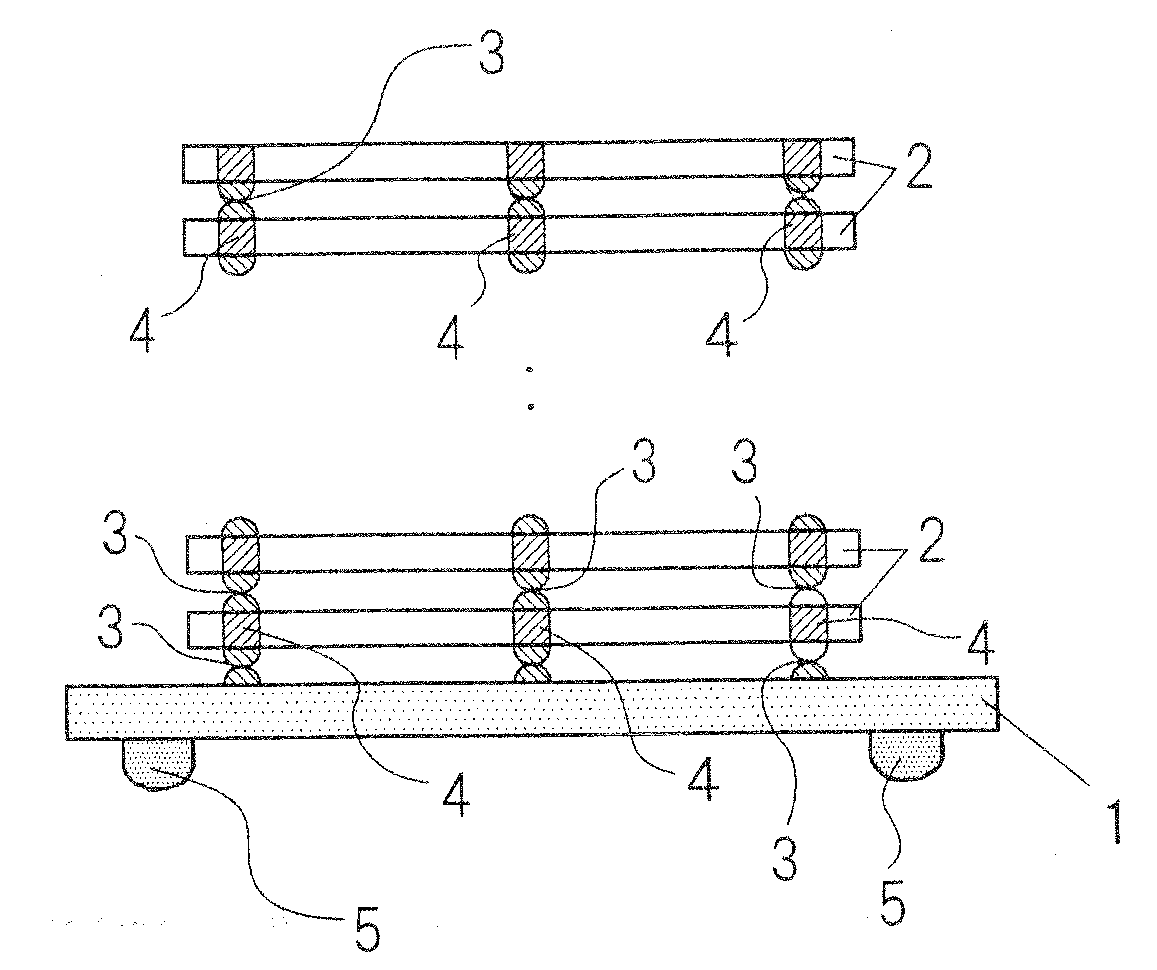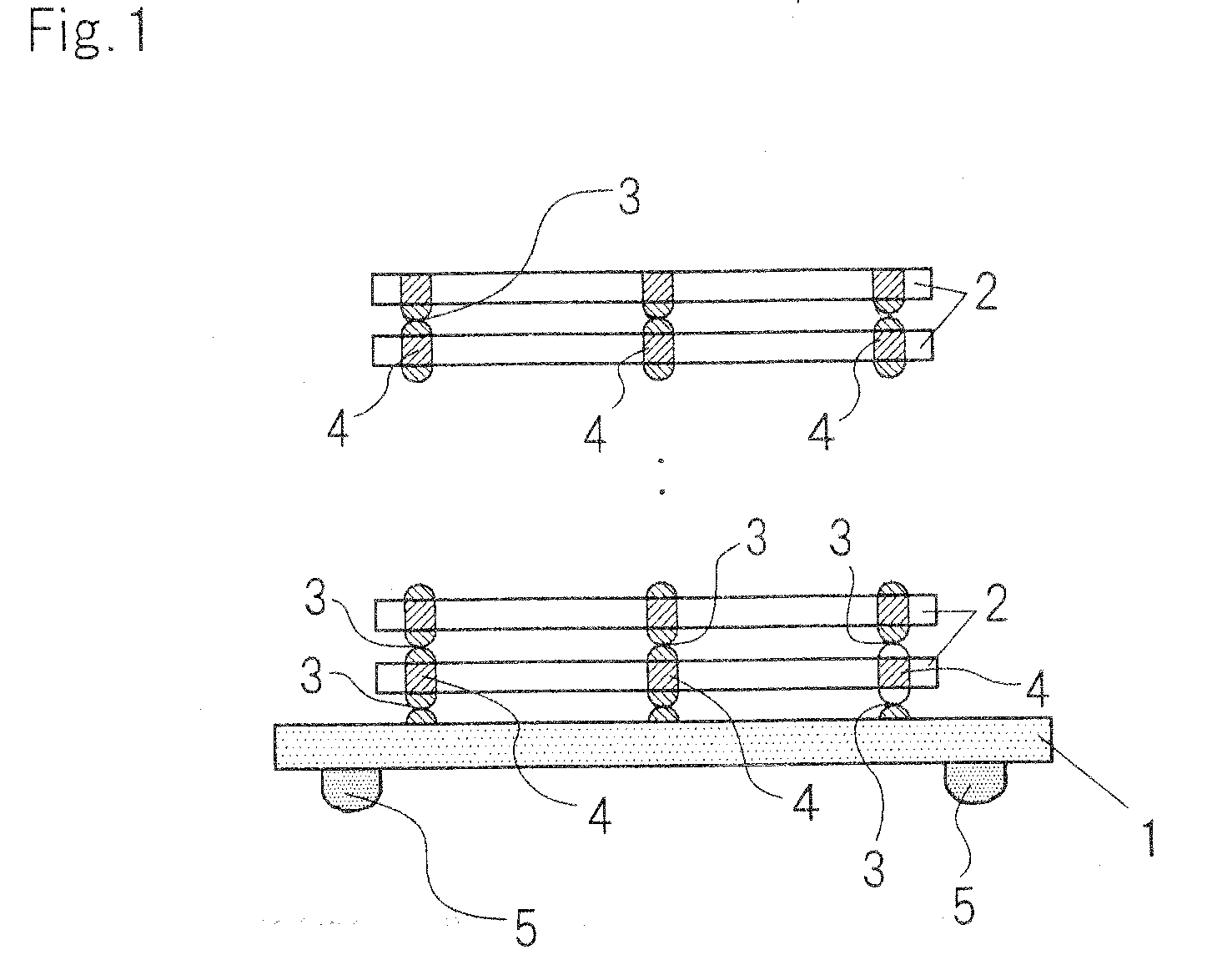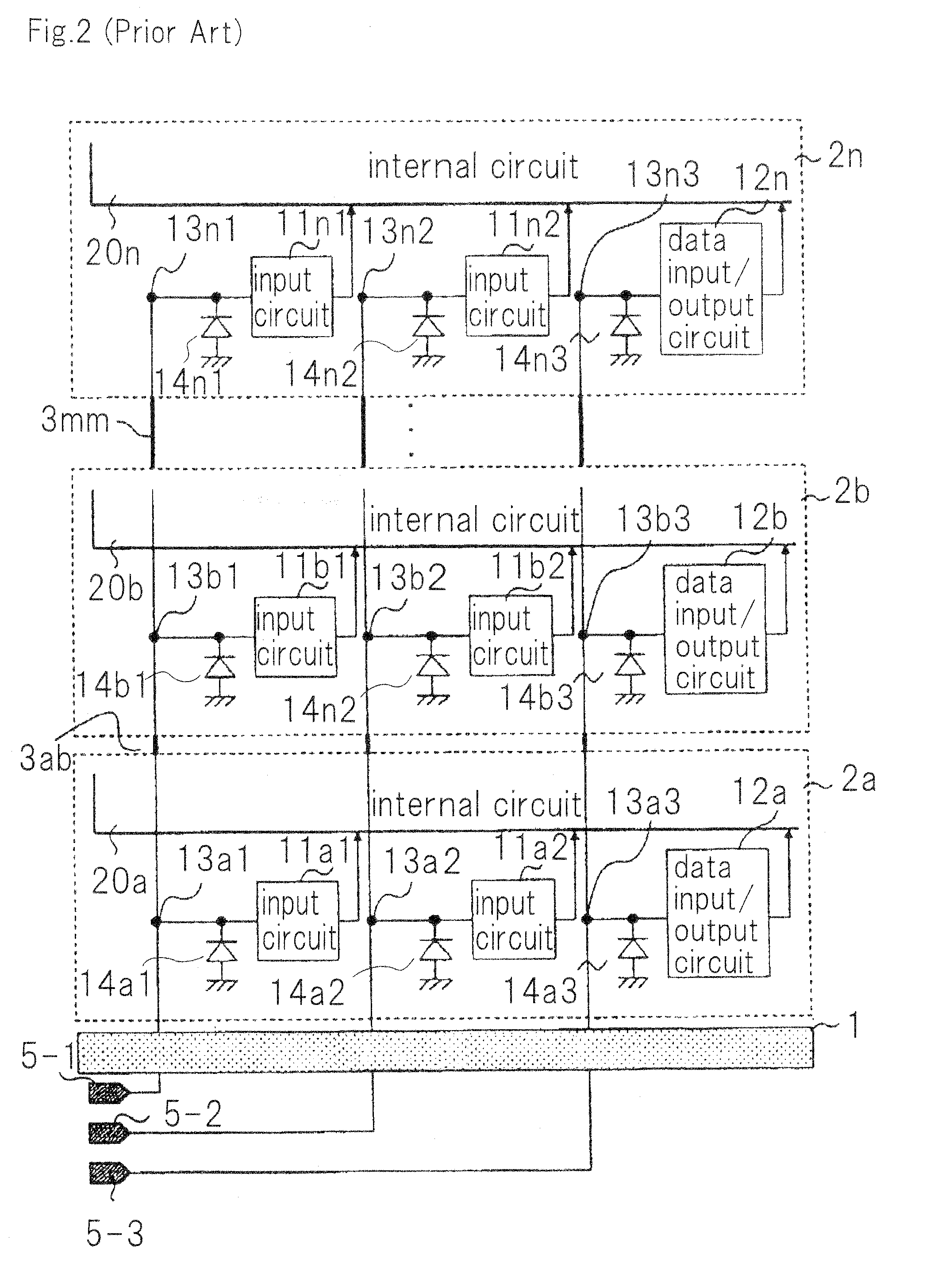Separate testing of continuity between an internal terminal in each chip and an external terminal in a stacked semiconductor device
a technology of stacked semiconductor devices and continuity testing, which is applied in the direction of semiconductor/solid-state device testing/measurement, semiconductor/solid-state device details, instruments, etc., can solve the problems of inability to identify the chip with a defective connection, continuity testing cannot be conducted, and cannot be seen
- Summary
- Abstract
- Description
- Claims
- Application Information
AI Technical Summary
Benefits of technology
Problems solved by technology
Method used
Image
Examples
first exemplary embodiment
[0029]FIG. 3 illustrates the detailed configuration of an input / output section of a semiconductor device according to a first exemplary embodiment of the present invention.
[0030]This stacked semiconductor includes interposer chip 1, a plurality of identical chips 2a, 2b, 2c, . . . that are stacked on interposer chip 1, external terminals 5-1, 5-2, 5-3, . . . , and continuity test dedicated terminals 6a, 6b, 6c, . . . , each associated with memory core chips 6a, 6b, 6c, . . . , respectively, continuity test dedicated terminals 6a, 6b, 6c each associated with memory core chips 6a, 6b, 6c, respectively.
[0031]Memory core chip 2a includes internal circuit 20a, input circuit 11a1, 11a2, data input / output circuit 12a; internal terminal 13a1, 13a2 for providing input circuit 11a1, 11a2 with a signal to operate internal circuit 20a, respectively, internal terminal 13a3 for inputting data to data input / output circuit 12a and for outputting data from data input / output circuit 12a. Similarly, m...
second exemplary embodiment
[0041]FIGS. 4a, 4b illustrate schematic configurations of another stacked semiconductor devices. The stacked semiconductor devices illustrated in FIGS. 4a, 4b differ from the stacked semiconductor device illustrated in FIG. 1 in that chips to be stacked include different chips (in this case, a memory core chip and an interface chip). FIG. 4a is an example in which the number of memory core chip 2 is one, and FIG. 4b is an example in which the number of memory core chip 2 is two. Interface chip 7 is a semiconductor chip which performs a specific circuit operation. Internal signals in memory core chip 2 and interface chip 7 communicate therebetween via internal terminal junction 3.
[0042]FIG. 5 illustrates the detailed configuration of an input / output section of a semiconductor device according to a second exemplary embodiment. This exemplary embodiment is applied to the semiconductor device shown in FIG. 4b. The configurations of memory core chips 2a, 2b and 2c are the same as those o...
third exemplary embodiment
[0047]FIG. 6a illustrates the detailed configuration of an input / output section of a semiconductor device according to a third exemplary embodiment. This exemplary embodiment is also applied to the semiconductor device shown in FIG. 4b. The present exemplary embodiment differs from the second exemplary embodiment in that external terminals 5-1, 5-2 for inputting control signals necessary for the control of internal circuit 20 in interface chip 7 are also used as external terminals to check the connection status of the internal terminals in memory core chip 2a. This reduces the number of external terminals of the stacked semiconductor device.
[0048]The detailed configuration will be described below. Interface chip 7 includes continuity test control terminal 6 and transfer gates 18-1, 18-2. In order to suppress ESD that is caused through continuity test control terminal 6, continuity test control terminal ESD element 21 is provided. Transfer gates 18-1 and 18-2 are of a conventional ci...
PUM
 Login to View More
Login to View More Abstract
Description
Claims
Application Information
 Login to View More
Login to View More - R&D
- Intellectual Property
- Life Sciences
- Materials
- Tech Scout
- Unparalleled Data Quality
- Higher Quality Content
- 60% Fewer Hallucinations
Browse by: Latest US Patents, China's latest patents, Technical Efficacy Thesaurus, Application Domain, Technology Topic, Popular Technical Reports.
© 2025 PatSnap. All rights reserved.Legal|Privacy policy|Modern Slavery Act Transparency Statement|Sitemap|About US| Contact US: help@patsnap.com



